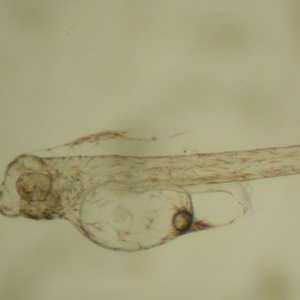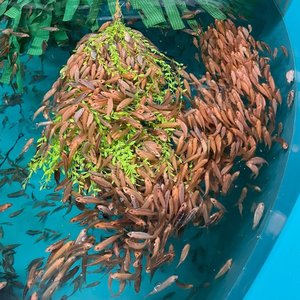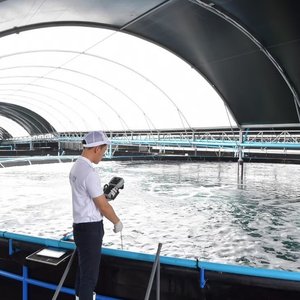Abstract
Seabass and gilthead seabream are the two marine fish species, which have characterized the development of marine aquaculture in the Mediterranean basin in the last two decades. The substantial increase in production levels of these two high value species has been possible thanks to the progressive improvement in the technologies involved in the production of fry in hatcheries. As a result of this technological progress more than one hundred hatcheries have been built in the Mediterranean basin, working on these and other similar species. At present the farmed production of these two species that is derived from hatchery produced fry is far greater than the supply coming from the wild.
The development of these techniques, based originally on Japanese hatchery techniques has followed its own evolution and has resulted in what could be called a Mediterranean hatchery technology that is still evolving to provide higher quality animals and to reduce cost of production. This is a dynamic sector but it can be judged that it has reached a level of maturity that merits the production of a manual for hatchery personnel. The preparation of the manual has taken several years, also due to the progress of the sector that led to substantial revisions of sections. This has lengthened its preparation beyond what was originally expected. The manual is not intended to be the final word on hatchery production but rather a publication on how the industry produces in the late nineties. We preferred to include proven procedures rather than orient this publication to research on hatchery produced fry, as there is plenty of academic literature on this subject.
The manual has been divided in two volumes, with this first one divided in three parts. The first part dealing with the historical background which has led to the present status of this practice, and a discussion of the main factors that affect fish seed production. The second main section of the first volume has been devoted to the life history and biology of the species that enter in the production cycle of seabass and gilthead seabream fry. This includes also a short section on microalgae, rotifers and brine shrimp. The third main section of the first volume, which is the longer one, deals with hatchery production procedures, from broodstock management to production of live feed, egg management, larval rearing weaning, fry transport, and diseases.
The second volume will include sections on architecture and design of the hatchery systems, engineering aspects, financial aspects of hatchery operation and will provide some example of real cases of different commercial hatcheries that in recent years have approached hatchery production of these two species.
Key words: marine aquaculture, fry production, Mediterranean aquaculture, seabass, gilthead seabream.
Authors
Alessandro Moretti
STM AQUATRADE Srl, Castelraimondo, Italy
Mario Pedini Fernandez-Criado
FAO Fisheries Department, Rome, Italy
Giancarlo Cittolin
Maricoltura di Rosignano Solvay Srl, Rosignano Solvay, Italy
Ruggero Guidastri
STM AQUATRADE Srl, Venezia, Italy
Publication
M-42 ISBN 92-5-104380-9 Food and Agriculture Organization of the United Nations Rome, 1999
Download the manual (PDF) from the link below:
manual-on-hatchery-production-of-seabass-and-gilthead-seabream-volume-1







